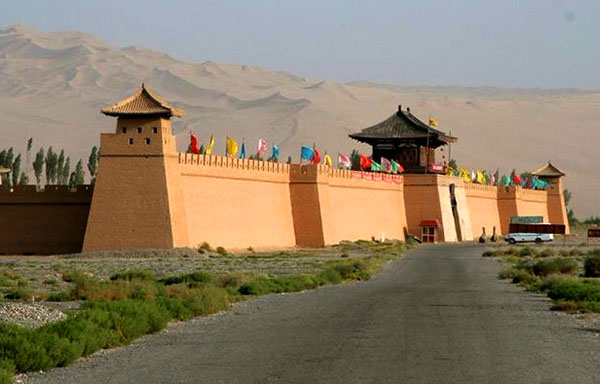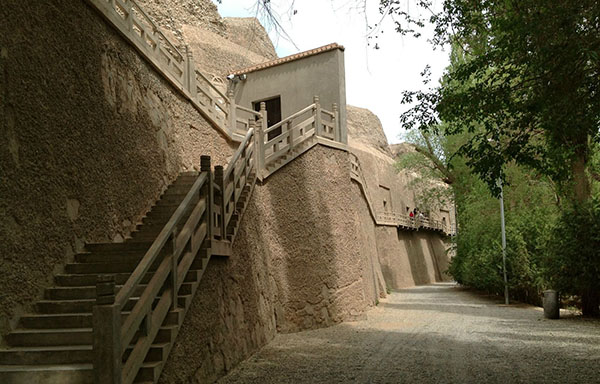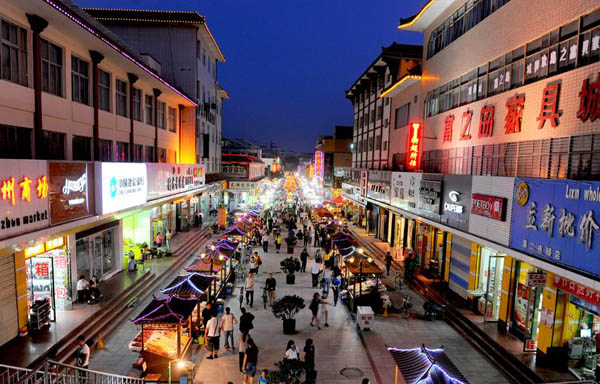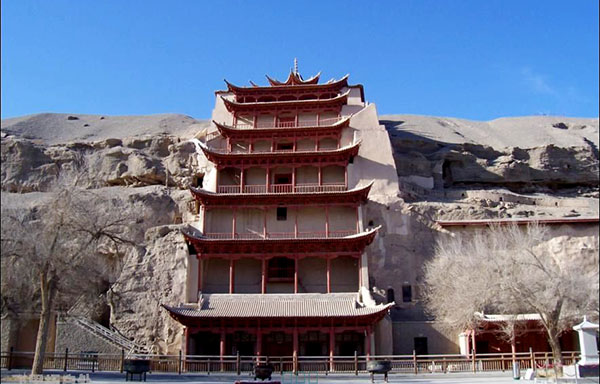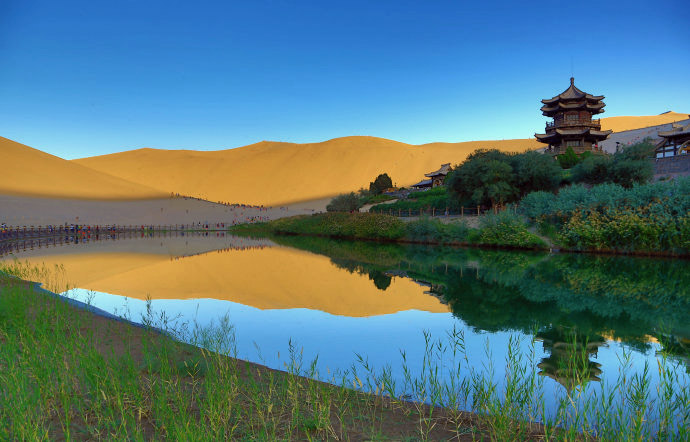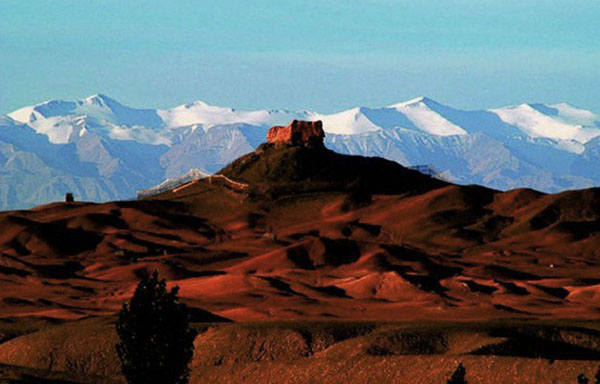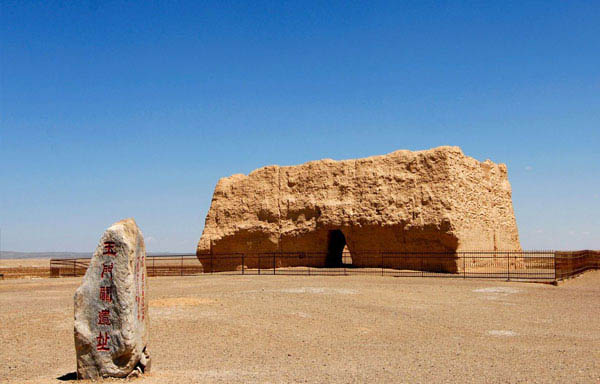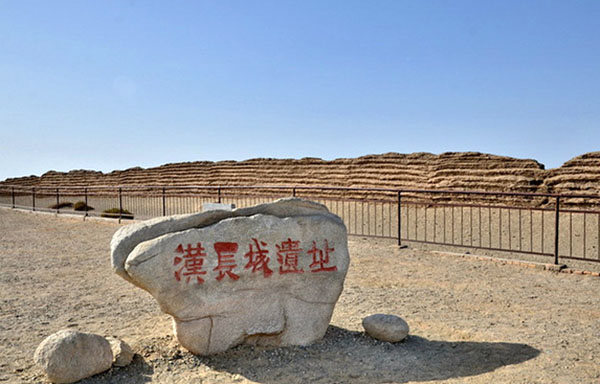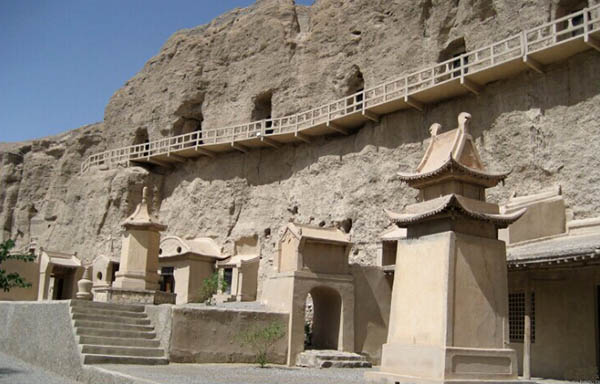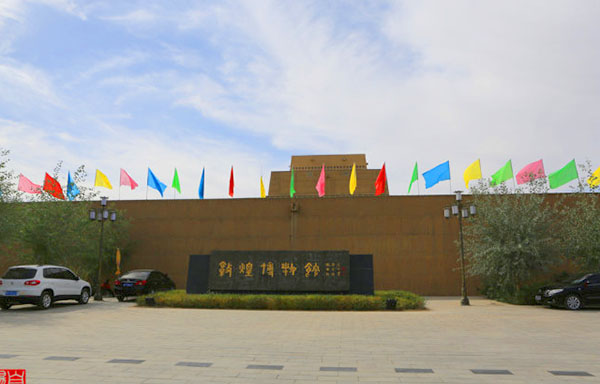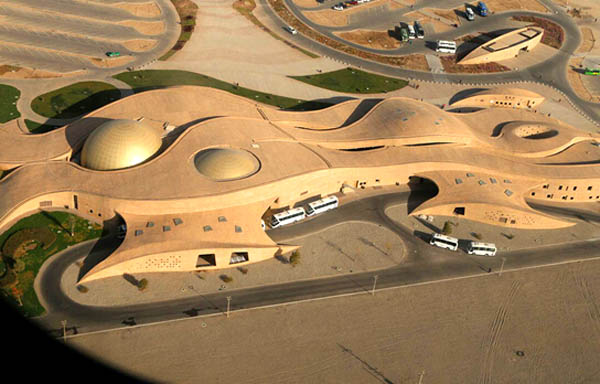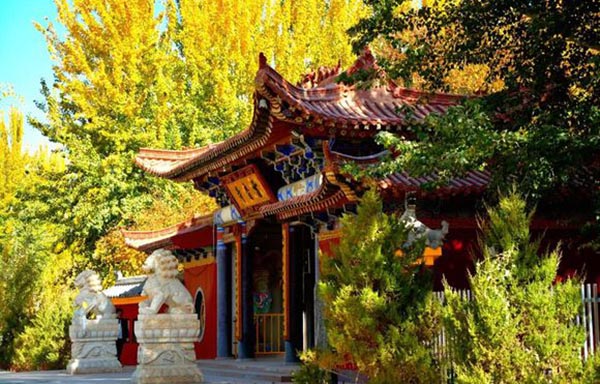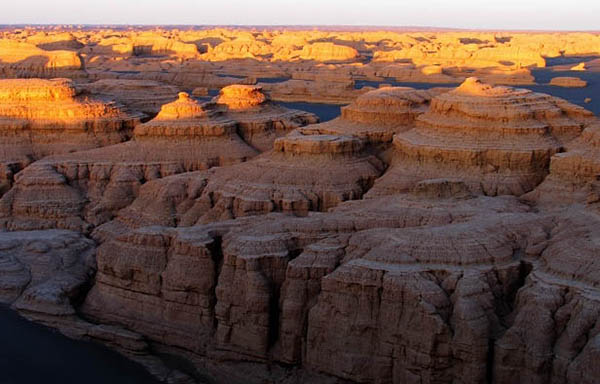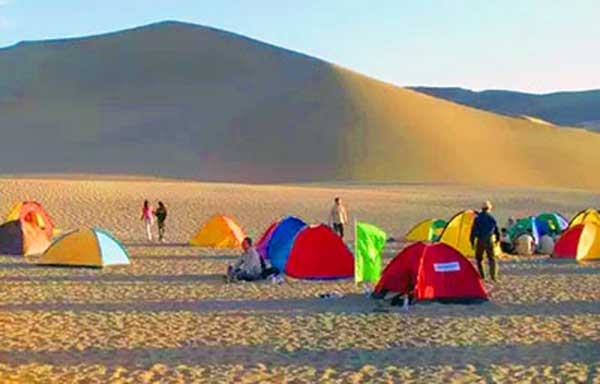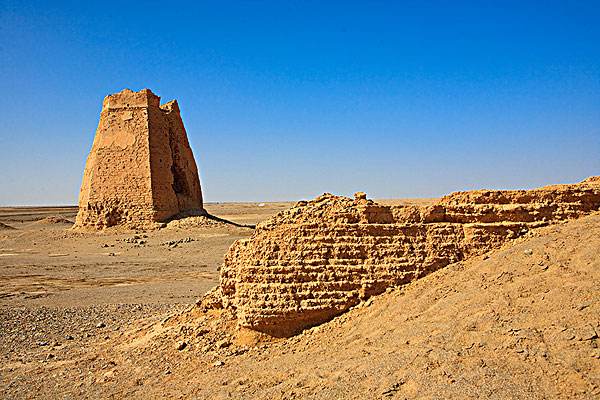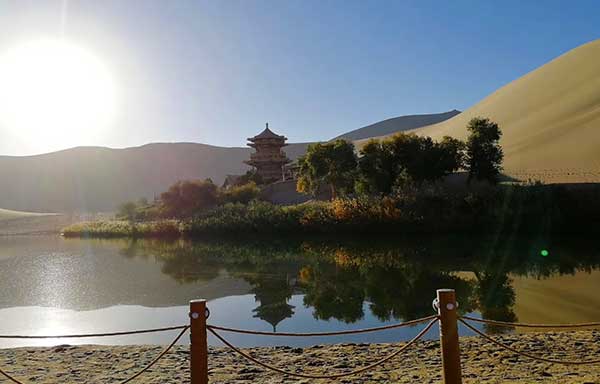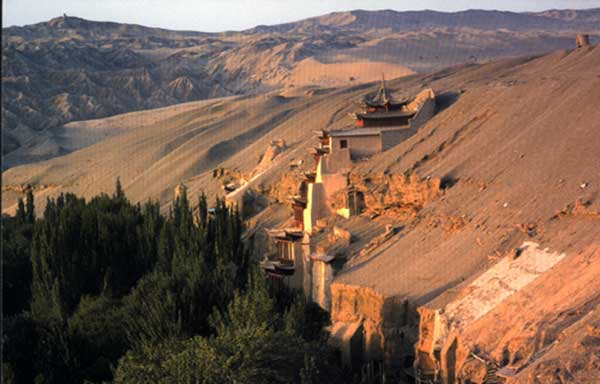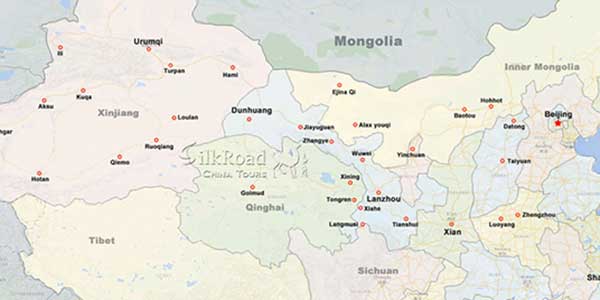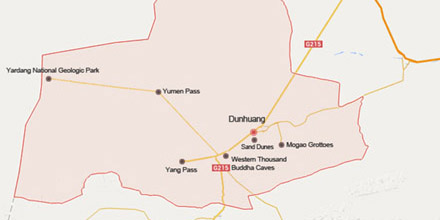 When talking about the Great Wall, people will immediately think you are referring to the wall in Ming Dynasty (1368 - 1644). Actually, north to the Ming's Great Wall in Hexi Corridor, lies a wall built in Han Dynasty (206BC - 220), which is more than 1,000 years earlier than the Ming's wall.
When talking about the Great Wall, people will immediately think you are referring to the wall in Ming Dynasty (1368 - 1644). Actually, north to the Ming's Great Wall in Hexi Corridor, lies a wall built in Han Dynasty (206BC - 220), which is more than 1,000 years earlier than the Ming's wall.
The Great Wall ends at the West Lake of Dunhuang, Gansu Province, over 311 miles west to Jiayuguan Pass. In history, the Han Dynasty built many walls to consolidate the safety of the frontier region as well as exploring ways to do business with western region. Instead of piling up stones or bricks layer upon layer like other dynasties' walls, the Han Dynasty Great Wall is built by using the local sand and weed. These two constructional materials were added by putting one on top of another. On average, every layer measures 12 to 15 centimeters (4.7 to 5.9 inches). The present remains of the wall measure from 1.6 feet tall to over 6.6 feet tall.
Many centuries later, the only remains of Han's Great Wall are a few broken sections and several towers distorted beyond recognition standing in the lonely desert. It is like an aged man watching the surrounding changes calmly after experiencing a lot. Listen carefully as he tells us that this place of desolation was once a fierce battlefield which was soaked by soldiers' blood. The path was stepped to and fro by the busy Persian and Han's business men as well as their camels carrying silk, china, carpet and food.
The Great Wall is dwindling day by day because of natural disasters and human destruction. If we don't save it right now, it will finally disappear together with its glorious historical memories. The rescue work is very urgent.
Gallery
Attractions in the area
Related Tours
General Information
Alias: Great Wall of Han Dynasty
Loc: 105 km from Dunhuang
Entrance: 0 RMB
Open Time: 08:00~18:00
Relevant blogs
-
What is the connection between "dragons" and "snakes
In traditional Chinese culture, the snake has a dual identity of auspiciousness and danger. Ancient people believed that the snake not only possesses divine cha
-
Endangered Przewalski's Horses Spotted at Dunhuang Yume
<p>In early February, a group of special "visitors"—the Przewalski's horses—appeared at the Dunhuang Yumen Pass scenic area in Gansu Province, a U
-
The Fourth Dunhuang Cultural Tourism Supplier Conference
On the morning of February 18th, the Fourth Dunhuang Cultural Tourism Supplier Conference in Northwest China commenced at the Dunhuang International Convention
-
Hu-style Lamb Stew with Flatbread
The Historical Origins of Hu-style Lamb Stew with FlatbreadFor thousands of years, Dunhuang has been a crucial town on the ancient Silk Road. The people living
-
During the Spring Festival holiday, Dunhuang City achiev
The city's major tourist attractions were bustling with visitors who came to explore the ancient city, admire the desert landscapes, experience the Silk Road c
-
Dunhuang fresh grapes were exported to Iraq for the fir
On January 6th, 42 tons of red table grapes, under the supervision of Dunhuang Airport Customs under Lanzhou Customs, set off from Shekou Port for Iraq. This is






